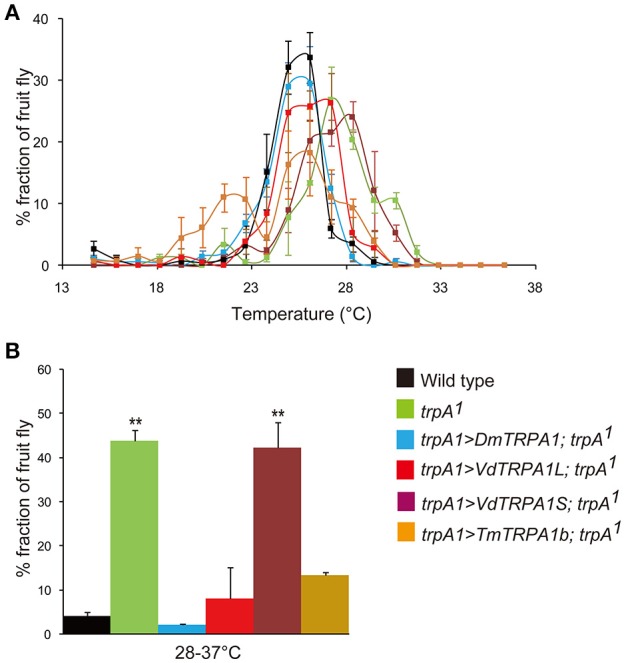Figure 2.

VdTRPA1L and TmTRPA1b are able to complement the functions of DmTRPA1 for thermotactic behavior of Drosophila melanogaster. (A) The distribution of wild type, trpA11, and trpA11 expressing either DmTRPA1 (trpA1>DmTRPA1; trpA11), VdTRPA1L (trpA1>VdTRPA1L; trpA11), VdTRPA1S (trpA1>VdTRPA1S; trpA11), or TmTRPA1b (trpA1>TmTRPA1b; trpA11) under trpA1-Gal4 was recorded along a thermal gradient (14–37°C). The recording was repeated three times for each group. The mean value with error bar (± SEM) is shown for each temperature section. (B) The percentage of fruit flies in the area of 28–37°C (Wild type: 4.1 ± 0.9%; trpA11: 43.8 ± 2.5%; trpA11 expressing DmTRPA1: 2.0 ± 0.4%; trpA11 expressing VdTRPA1L: 8.0 ± 7.1%; trpA11 expressing VdTRPA1S: 42.2 ± 5.8%; trpA11 expressing TmTRPA1b: 13.3 ± 0.8%) of the thermal gradient. Asterisks (**) are significantly different from wild type, and P-values for both trpA11 and trpA11 expressing VdTRPA1S are < 0.00003 and < 0.00007, respectively.
